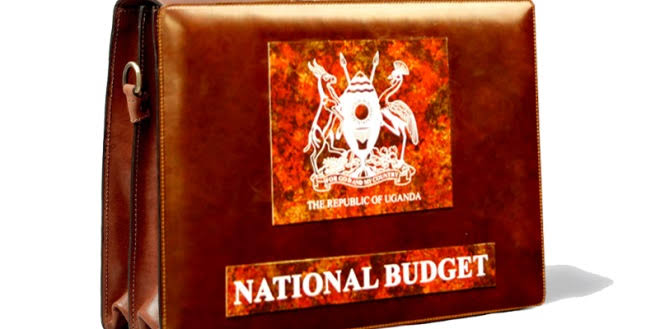A “white elephant project” is a metaphor for a possession, project, or venture that is expensive to maintain or acquire but yields little or no practical value or benefit, essentially a costly burden. White elephant projects are generally initiated with great enthusiasm and expectations. However, due to reasons such as poor planning, lack of demand, lack of wisdom, cost overruns, or corruption, these projects end up becoming financial burdens with little or no utility benefit or profitability. Financial haemorrhage is integral to white elephant projects.
A “financial haemorrhage” refers to a situation where there’s a severe and rapid loss of financial resources, often due to uncontrolled or unsustainable spending or losses. Haemorrhaging money is a place nobody wants to end up in. Even the word “haemorrhaging” sounds a bit nasty. In the world of finance, haemorrhaging money means losing significant sums of money, sometimes it is called “bleeding money.”
There is no political regime in Uganda since independence in 1962 that undertook so many white elephant projects, resulting in enormous financial haemorrhage as did the NRM region between 1986 to the present. Every white elephant project was regarded as development. The greatest collective outcome of the white elephant projects was corruption in every aspect of human life and human endeavour. Corruption has sabotaged every aspect of development in Uganda: economic, social, political, human, infrastructural, et cetera.
If I give you a list of while elephant projects in Uganda you will be surprised. They include the Bush War, Barter Trade, Banks, Cooperatives, Privatisation, Politics, Militarism, Liberation Day Celebration, Elections, Uganda Airways, Parish Development Model, Myooga, Decentralisation, Bonna Bagaggawale, Operation Wealth Creation, State House, Electricity Generation, Executive, Cultural Institutions, National Environment Management Authority, Inspector-General of Government, Uganda Airways, Uganda Railways, Uganda National Road Authority, Mineral Development, Oil and Petroleum, University Education Development, Universal Secondary Education and Universal Primary Education, Tristar, Atiak Sugar, Lubow Hospital, Coffee, and Domestic/External Government Borrowing, to name but a few. They have individually and collectively yielded little or no utility beneft or profitability, and as expected exacted enormous financial burden and haemorrhage on the country and the taxpayers of Uganda.
The most dangerous white elephant project is Government’s Domestic and External Borrowing, which is wildly supersonically growing. A lot of financial haemorrhage has occurred and continues to mushroom via government’s domestic and external borrowing with little or no value added to the development, transformation and progress of the country and citizens of Uganda in real terms except in figures given by government officials.
Don’t ask me who is responsible for financial haemorrhage that is denying Uganda and its people development, transformation and progress. It is obvious: President Tibuhaburwa Museveni and his Cabinet, who together or separately conceive the projects and the Parliament of Uganda, which allocates money for the project with little or no critical thinking and/or critical analysis of government proposals of projects. However, in a country where presidentialism is entrenched and everything small and big originates from the President, there is every temptation to advance that the force behind the financial haemorrhage of the country is the President of Uganda, who influences how the other actors think, act and perform according to his choices. The President is the substantive Minster of Finance. The characteristic financial bleeding is making national budgets and not sticking to them, and making several supplementary budgets on top of the annual national budgets, usually for politics, administration, state house and war. -the easiest way to get money. Financial may occur officially (e.g., Vanguard, 2014) through capital flight.
Let me say a little about some of the different white elephant projects I have mentioned in this article to initiate debate on financial haemorrhage or financial bleeding in Uganda over the last 45 years of NRM/A invasion, occupation, conquest and domination of Uganda’s colonics, social, political, financial and environmental spaces.
Uganda’s Barter Trade Project
Barter trade, or bartering, is the direct exchange of goods or services for other goods or services without the use of money or a monetary medium. This was the first economic choice of the NRM/A when the new rulers sympathised with Marxist-socialist principles of managing society. However, it lasted only 18 months when rebel leader and President Tibuhaburwa Museveni shifted his economic policies in favour of World Bank and International Monetary Fund financial, monetary and economic choices. The country suffered a lot of financial haemorrhage during the Barter Trade debacle and continues to suffer the scourge under World Bank and IMF patronage.
Financial Haemorrhage of Banks
In Uganda, several banks have faced closure or significant issues, including Teefe Bank, International Credit Bank, Greenland Bank, The Co-operative Bank, National Bank of Commerce, Global Trust Bank, and Crane Bank. It is significant to note that Uganda Commercial Bank was sold off under mysterious circumstances, and there was a lot of financial bleeding before, during and after the sale (e.g., Brownbridge, 2002).
Financial Haemorrhage of Cooperatives
The collapse of cooperatives in Uganda occurred particularly in the 1970s and 1980s, and was largely attributed to political instability, economic liberalization, and mismanagement, leading to the failure of many, though some managed to survive. However, we all now know that it was the policy of the National Resistance Movement /Army during and after its bush war in the Luwero Triangle. A lot of financial bleeding occurred in what looked like scorch-earth policy, with most of the money and resources of the cooperatives ending in the pockets and hands of the bush fighters in government. Citizens of Uganda lost their money and properties and never rose again financially and economically.
Foreign Exchange Debacle of 1987
Ugandans and institutions were promised a stable and productive economy after the 1987 foreign exchange intervention by the bushmen in power when three zeros were removed from their money. Many institutions, businesses collapsed, never to rise again due to financial haemorrhage. Since then, however, Uganda has faced a foreign exchange “debacle” due to mounting public debt, declining foreign exchange reserves, and a depreciating shilling, impacting the economy and its ability to service debt.
Uganda’s Retrenchment Project
Retrenchment is the reduction of costs or spending in response to economic difficulty. The action makes employees redundant. In Uganda, the new NRM/A government carried out a retrenchment exercise in the early 1990s. It reasoned that it was removing dead wood (old people) from public service to ensure efficiency and a small productive force in the civil service. However, instead, the numbers of employees mushroomed over time and became ethnically overinflated with many people drawing elephant-sized salaries, thereby exacting enormous strain on the economy. The taxpayer has continually suffered financial bleeding.
Privatisation Project
Uganda’s privatization project, initiated in 1993, aimed to reduce the government’s role in the economy and promote private sector development by transferring ownership of state-owned enterprises (SOEs) to the private sector. Some enterprises were given away at peanuts (even at ONE SHILLING). With the passage of time, it became known that many enterprises passed into the hands of NRM rulers and functionaries, with foreigners (Indians) serving as fronts. Financial haemorrhage was enormous. And of course, most workers in those enterprises lost income
Politics, Militarism Project
While there is widespread thinking , belief and conviction that militarism is emerging to be the greatest threat to Uganda’s peace and stability (Nalubwama, 2025), through financial haemorrhage occasioned by the country’s military belligerence in the Great Lakes region and over- engagement in the electoral processes will be the greatest threat to economic and social development in the country so long as NRM/A-cum-NRM/UPDF consolidates its hold onto power beyond 40 years, which seems to be the plot. Just recently on March 28 Parliament retrospectively approved 39.1 billion to the UPDF, ostensibly to ensure peace and security in South Sudan although it is not impartial in the current conflict in the country.
Liberation Day Celebrations Project
The NRM/NRA has since 1987 celebrated what it calls Liberation Day, although many Ugandans think the day 25th January 1986 was not liberation of Ugandans as such but Tutsi refugees and former refugees in Uganda that captured the instruments of power from the Tito Okello Military Junta. Some of the refugeed, organised as Rwandese Patriotic Front /Army (RPF/A) within NRM/A ended up capturing the instruments of power in Kigali, Rwanda in 1994. Uganda continued to bleed financially as the RPF/A entrenched itself in power, since despite denials, NRM/A provided a lot of support to its baby -RPF/A – beyond 25th January 1985. The Liberation Day Celebrations Project has been made a national project, thereby consuming billions, perhaps trillions of shillings over the last nearly 40 years.
Uganda Elections Project
Very early in its rule in Uganda the NRM/A declared that democracy is expensive. This has been demonstrated in electoral politics since the early 1990s, when NRM/A organised National Resistance Council elections to make the Uganda Constitution 1995. However, since then the constitution, which they said would stand the test of time has been revised 63 times, and is about to be revised by raiding the UPDF Act to make sure that civilians accused of terrorism and/or treason are tried in the military courts legally. Elections have been highly monetised, thereby compromising electoral democracy by making it too expensive for people of integrity but no money to offer themselves for electoral office. Political corruption has risen supersonically, just as elections consume a lot of money to organise and execute.
Uganda’s Borrowing Project
An update on Uganda’s debt situation of 31st January 2025, stated that Uganda’s total public debt currently stands at Shs94. 9 trillion as of June 2024, with debt servicing consuming nearly a third of domestic revenue. There is no indication that the NRM government is about to consciously curtail its borrowing instincts. Neither is it bothered by the fact that it is pushing the debt burden to future generations of Ugandans unlikely to benefit from the incessant borrowing. The country is financially bleeding and future generations will financially bleed via the debt channel, with talk of development, transformation and progress of Uganda being mere talk. It is a few individuals in the country and those outside the country that are involved in negotiating who are benefitting from the loans domestically and externally. They are a burden to the country today and to future generations tomorrow.
I could go on and to give you to what extent Uganda has financially bled under NRM/A reign but due to lack of time and space let me end here. You can do individual research on the other white elephant projects I have named in this article. My aim was to cause you to start thinking critically, reasoning critically and analysing critically our country’s financial and economic situation burdened by financial haemorrhage for almost 40 years of white elephant projects. Many times what we regard as success stories are while elephant projects.
For God and My Country
Further Reading
Editorial (2024). Financial Haemorrhage in The Public Sector (2). Independent, January 23 2024, https://independent.ng/financial-haemorrhage-in-the-public-sector-2/ Visited on 29 March 2025 at 19:26 pm EAT.
Ismail Musa Ladu (2017). URA takes Head-on the fight Against Illicit Financial Flows. Daily Monitor, December 11 2017, https://www.monitor.co.ug/uganda/business/prosper/ura-takes-head-on-the-fight-against-illicit-financial-flows-1730424 Visited on 29 March 2025 at 19:42 pm EAT.
Martin Brownbridge (2002). Resolving Bank Failures in Uganda: Lessons from Recent Bank Failures. Researchgate, July 2002 Development Policy Review, 20(3):279-291. https://www.researchgate.net/publication/227814027_Resolving_Bank_Failures_in_Uganda_Policy_Lessons_from_Recent_Bank_Failures Visited on 30 March 2025 at 10:31 am EAT
Olivia Nalubwama (2025). Is Militarism the greatest threat to Uganda’s peace and stability? The Observer, March 12 2025. https://observer.ug/viewpoint/is-militarism-the-biggest-threat-to-ugandas-peace-and-stability/ Visited on q11:45 am EAT
Otiato Guguyu (2019). Decade Long Haemorrhage that put the National Bank on deathbed. Financial Standard, Jun 11, 2019 https://www.standardmedia.co.ke/sports/amp/financial-standard/2001329350/decade-long-haemorrhage-that-put-national-bank-on-deathbed Visited on 29 March 2025 at 19:33 pm.
VANGUARD (2014). Nigeria: Financial Haemorrhage – Nigeria Bleeds As U.S.$1.7 billion Goes Out Weekly. All Africa, 27 JANUARY 2014 https://allafrica.com/stories/201401270292.html Visited 29 March 2025 at 19:18 pm EAT
This post was created with our nice and easy submission form. Create your post!






